Updated: 25-Sep-2024
SPA stands for “Societá Piemontese Automobili” but its correct name is “Societá Ligure Piemontese Automobili” from Turin.
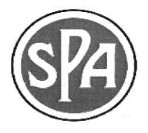
“SPA logo”
Some people have told me, not without reason, that SPA meant “Societá per Accioni”. It would be true if it were accompanied by a name.
-And also written “SpA” with a lowercase “p”.
-In 1906, it was founded in a notarial act by Michele Ansaldi and Matteo Ceirano, both from the automotive sector.
-The SPA-6 was an engine inspired by the Mercedes and in the 200/210 HP category. It was designed by Matteo Ceirano and the DTAM or Direzione Tecnica Aviazione Militare.
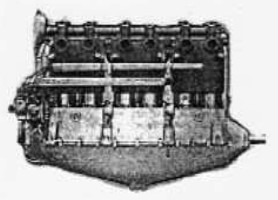

“The SPA6, from both sides”
-But the story began much earlier, during the construction of cars, which was the company's main activity (during WWI it made small tanks).
-The car engines were adapted to the airships of the early 20th century.
-Very heavy four-cylinder engines were used.
-The 28/40 HP engine was manufactured between 1907 and 1911. This engine evolved to 50/55 HP.
-The 25 HP engine was manufactured between 1908 and 1911 as well. This one had 6 cylinders and three cylinder blocks, each with a bore of 95 mm and a piston stroke of 120 mm.
-The dirigibles of the Count of Schio (Americo da Schio) used these engines.
-They were also mounted on the “Italia” and the “Ausonia”.
-Later there was another SPA 6 like the one mentioned, used on the Ansaldo “Balilla” A-1 aircraft and on the next Ansaldo SVA aircraft such as the -4, -5 and -9.
-Also on the Breda A.8 and A.10. (SVA are the initials of Savoia-Verduzzo-Ansaldo).

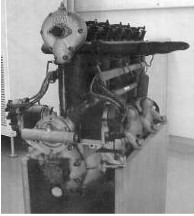
“SPA 6, in Vigna di Valle”
-The SPA 6, with 200 HP, can also be seen at the Museum of the Royal Aeronautics in Vigna di Valle, at Lake Braciano about 40 km north of Rome.
-The SPA 6 with 210 HP is the one in the below illustrations.
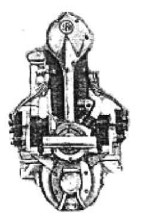
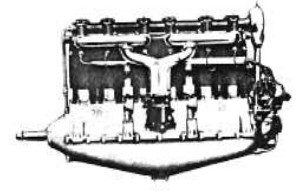
“SPA 6, 210 CV”
-The SPA is shown in the illustrated parts catalog as follows.
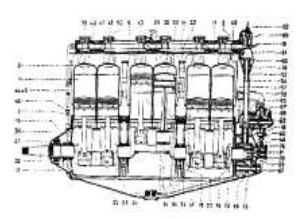
“SPA 6, parts price list of the time”
-Each number and line indicates a part that is identified by name in a separate list so that it can be requested from the supplier as a spare part.

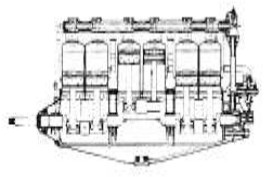
“SPA, 6A”
-The most famous in-line cylinder engine has been the SPA 6A.
-It was used on various aircraft of the Italian Military Aeronautics in WWI. About 2,500 units were manufactured.
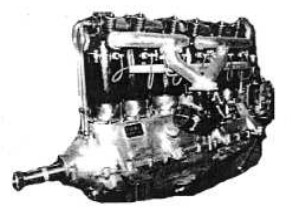
“SPA, 6A”
-The companies Ansaldo / San Giorgio, Talamona and the Industrie Meccaniche e Ferroviaria of Arezzo also participated in this model.
-There were two versions of the SPA 6A, the normal 200 hp compressed to 5.2 and the over-compressed 5.46 to 1.
-The SPA 6 evolved into the -6C DA with 220 hp, the -6 AS.S giving 280 hp, or the -6.2a with 285 hp.
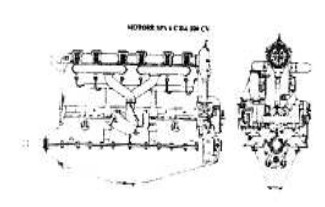
“SPA, 6C DA”
-Aristide Faccioli was another designer for SPA, born in 1870 and 22 years older than Matteo Ceirano. Faccioli is credited with a nice V8 and the strange number 3.
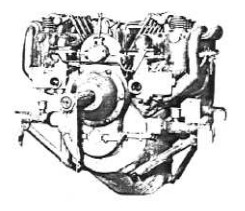
“SPA 8V, 80/100 CV”
-The SPA 8V had its cylinder blocks at 90°, was water cooled, and had overhead valves actuated by rods and rocker arms.
-It had simple ignition with two magnetos, one for each cylinder block.
-It had a 2 to 1 reduction gear. It was manufactured in 1910 and remained an experimental engine.
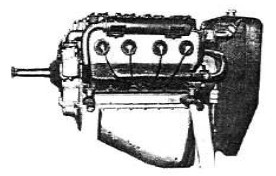
“SPA 8V with the radiator at the rear”
-The 4-cylinder engine with opposed pistons was known as Faccioli No. 1.
-The Faccioli No. 2 had two cylinders and its operating principle can be seen below.
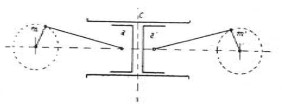
“Principle of the Faccioli No. 2”
-The Faccioli No. 2 was a 25 HP engine. It was built between 1908 and 1910. The engine had a transmission between the cylinder heads to combine the movement of the pistons.
-The four-cylinder engine was actually an 8-cylinder engine, as it had four double cylinders in a rhomboid position at first glance and therefore eight pistons.

“Faccioli, nº 3”
-In reality, they were two V engines connected by the combustion chambers. Each cylinder connected to the other had a single set of valves in its chamber.

“Faccioli nº 3, front view”

“Rear view of the previous engine”
-We see a transmission shaft that connects the two crankshafts at each end. Other gears, in the center, drive the distribution.
-Other power ratings were made, such as the 40 HP at 1,200 rpm, between 1912 and 1914. It was a water-cooled engine.
-Some of these engines are on display at the Vigna di Valle Museum. We first see the one with the magnetos on the transmission shaft on the left side behind the cylinders.
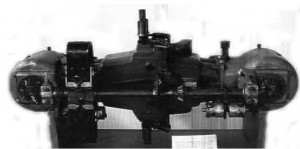

“Two views of the same Faccioli”
-Two other models are the 75 CV and the 100 CV, from the same years as the previous one.
-Another model, with the magnetos behind each crankshaft.
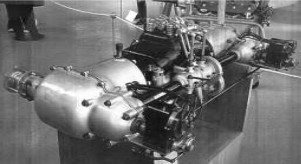
“Nice appearance of the rear part of the 4”

“Distribution details”
-In the above illustration we see the camshaft box, rods, rocker arms and valves with their springs.
-There is another 8-cylinder engine (16 in fact). It was built from 1909 to 1911, and gave 90 hp.
-In 1912, SPA entered an Italian competition with an engine corresponding to a 10-cylinder Anzani, which we show below.
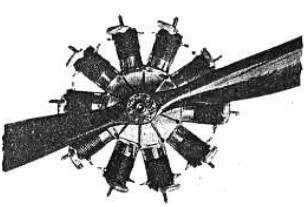
“SPA-Anzani 10-cylinder”
-The Faccioli engines built by SPA with cylinders joined by the cylinder heads, in fact, two small V engines joined by the cylinder heads, were also called “Rombicos”, due to the rhombus shape they showed.
-Reviewing production chronologically we have:
-In 1908, the Faccioli No. 1 with 8 opposed cylinders, liquid cooled and giving 80 hp at 1,200 rpm.
-In 1909, the Faccioli No. 2 with 2 opposed cylinders giving 20 HP at 1,500 rpm. It was water cooled.
-In 1911, the Faccioli No. 3 with 4 cylinders. It was a rhombic, water-cooled engine that gave 40 HP.
-In 1912, the SPA-Faccioli with 8 cylinders giving 90 HP. It was a a rhombic, liquid-cooled engine.
-In 1908, the 4-cylinder in-line engine of 35 HP was made for the Ausonia airship.
-In 1910, the 55 HP engine for the Ausonia as well.
-In 1910, an 80/100 HP engine for the Usuelli airship.
-Also in 1910 the first V8 that gave 100 hp at 1,800 rpm
-Another V4 giving 160 hp at 1,000 rpm, in 1911 for dirigibles.
-In 1912, the Anzani engine with 10 radial cylinders giving 80 hp.
-In 1916 the 6A with six inline cylinders giving 205 hp.
-In 1917 the 6AS.S.C giving 210 hp. And the 6AS.C, delivering 230 hp.
-In Angle's important text two more engines are mentioned, the Type 1-A and 2-A.
-Thus, the Type 1-A comes as a 16-cylinder V at 45° composed of two banks of cylinders equal to those of the 6A, giving 500 hp at 1,500 rpm.
-The Type 2-A was a V-8 with the same cylinders as the 6A delivering 300 hp at 1,600 rpm.
From Appendix 6: A modernist advertisement from the WWI era is shown below. Here we can see the material delivery room with a large series of SPA aircraft engines.
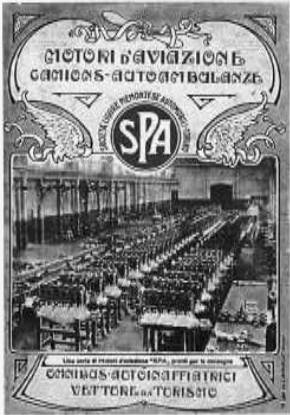
“SPA ad”
-The main product is aircraft engines, then trucks and cars.
-SPA is the Societá Ligure Piemontese Automobili - from Turin.
From Appendix 9: The SPA-6A engine that is available at the Museo Italia della Regia, in Vigna di Valle, is now a “Vedette”.
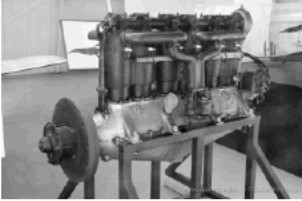
“SPA-6A”
-Instead of a propeller, it has a heavy flywheel that performs the functions of overcoming moments of inertia and resistance.
-In a video on “You Tube” the museum staff is in charge of starting it, in an interesting process that must be followed step by step to understand it.
-As there is no cooling liquid circuit, the operating time is short, when the temperatures begin to evaporate oil from all sides.
-The author of this post has a Blog in which he comments on this fact and includes the video in question. See:
<Messa in motore avio SPA-6A 1916 - Vigna di Valle>.
-You can also see the video directly on Youtube from here.
-PS. The person in charge of the starting process of this relic is a technical employee of the Bugatti company.
From Appendix 10: Below we show a schematic diagram of a SPA engine with two propellers for airships. In the main text there are photos of this type of engine designed by Faccioli.

“Clearly a design by Faccioli”
Engines of SPA
Model: 4 cyl. in-line, Ausonia space-ship
Arquitecture:
Cooling:
Total Displacement:
Bore / Stroke: x
Power:
Weight:
Model: 6, -A, -C, -DA
Arquitecture:
Cooling:
Total Displacement:
Bore / Stroke: x
Power:
Weight:
Model: 6.2a
Arquitecture:
Cooling:
Total Displacement:
Bore / Stroke: x
Power:
Weight:
Model: 6AS.S
Arquitecture:
Cooling:
Total Displacement:
Bore / Stroke: x
Power:
Weight:
Model: 8V
Arquitecture:
Cooling:
Total Displacement:
Bore / Stroke: x
Power:
Weight:
Model: Anzani 10 cyl., (Lic.)
Arquitecture:
Cooling:
Total Displacement:
Bore / Stroke: x
Power:
Weight:
Model: Faccioli 1
Arquitecture:
Cooling:
Total Displacement:
Bore / Stroke: x
Power:
Weight:
Model: Faccioli 2
Arquitecture:
Cooling:
Total Displacement:
Bore / Stroke: x
Power:
Weight:
Model: Faccioli 3
Arquitecture:
Cooling:
Total Displacement:
Bore / Stroke: x
Power:
Weight:
Model: Faccioli 4
Arquitecture:
Cooling:
Total Displacement:
Bore / Stroke: x
Power:
Weight:
Model: Type 1-A, 16V
Arquitecture:
Cooling:
Total Displacement:
Bore / Stroke:
Power:
Weight:
Model: Type 2-A, 8V
Arquitecture:
Cooling:
Total Displacement:
Bore / Stroke: x
Power:
Weight:


